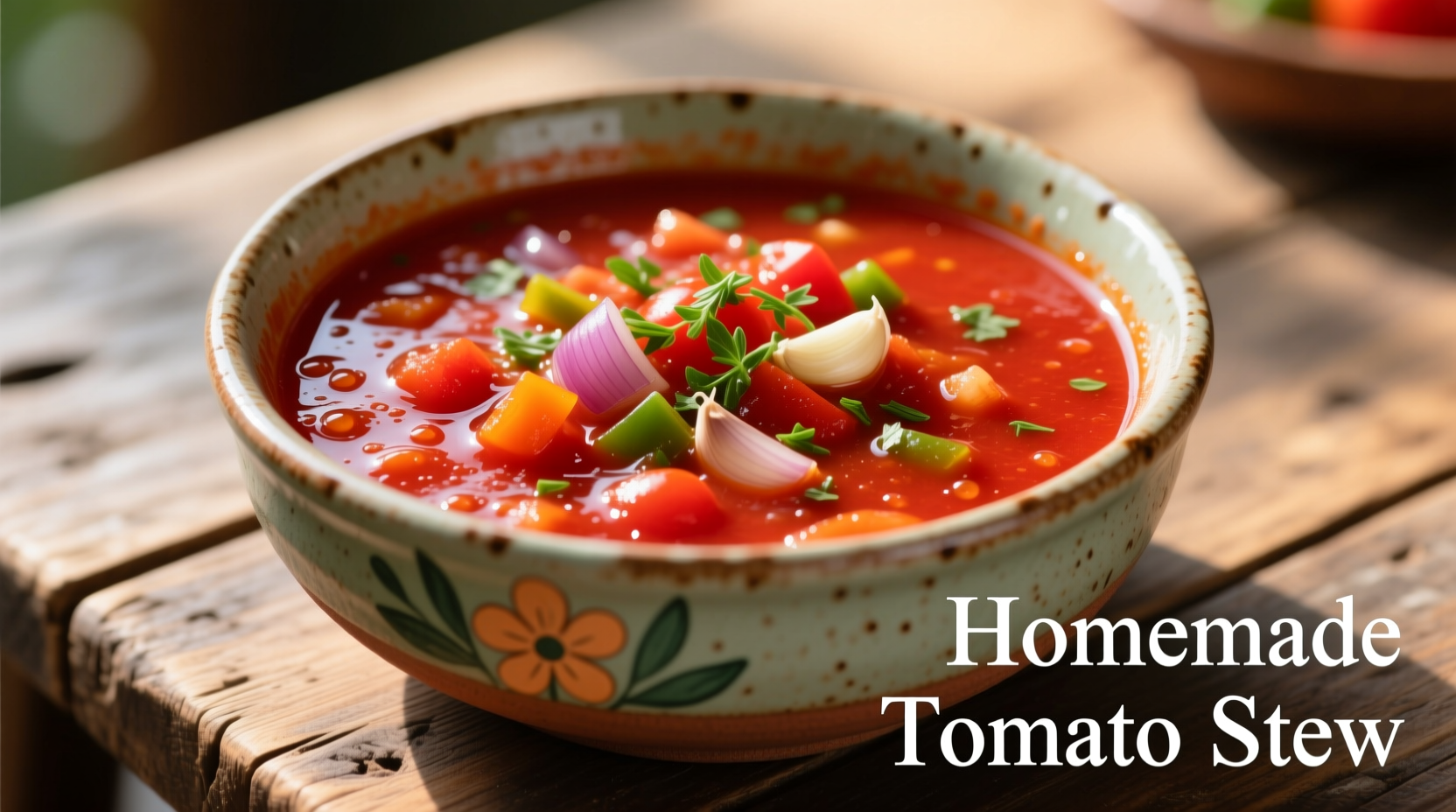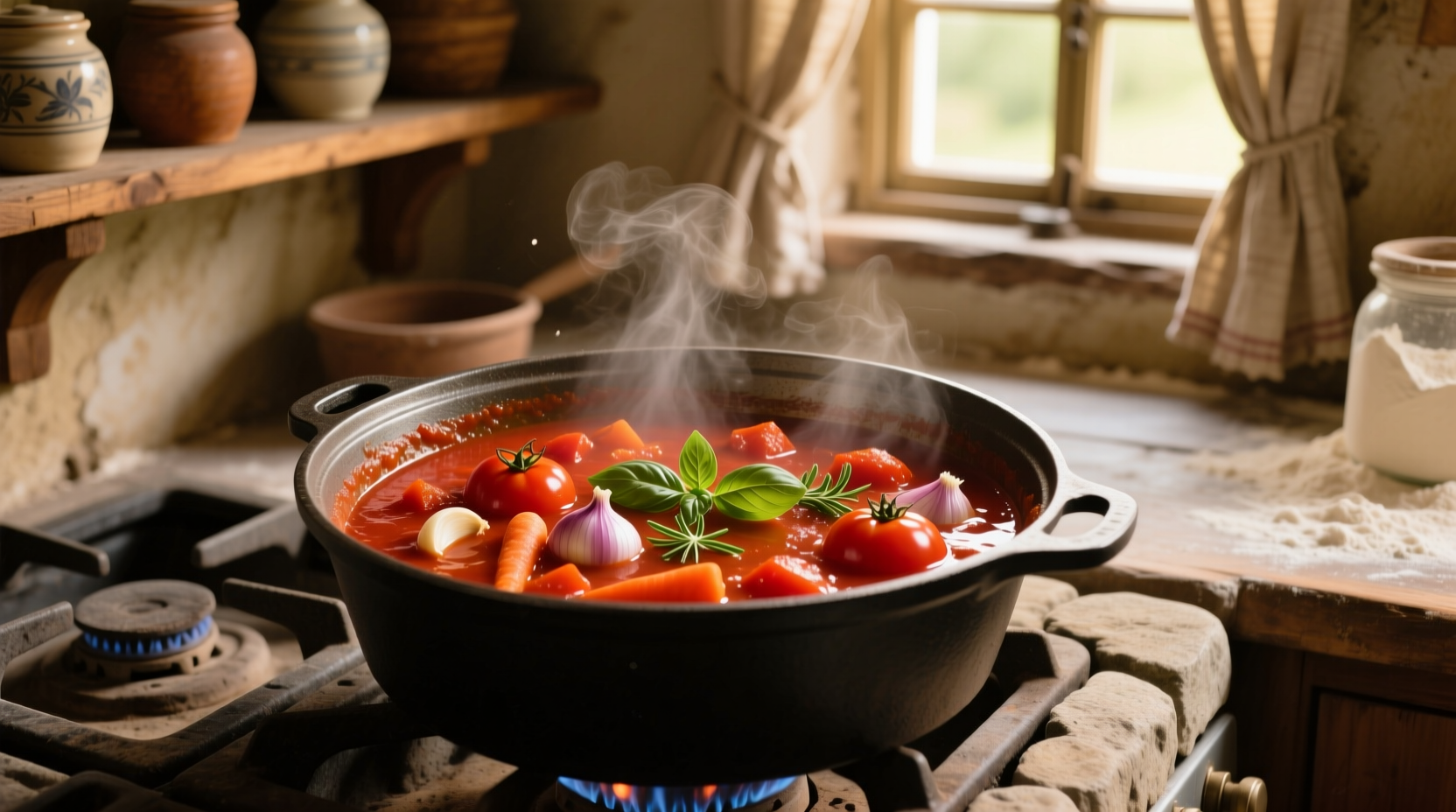Why Tomato Stew Deserves a Permanent Spot in Your Cooking Rotation
Tomato stew transcends basic comfort food—it's a culinary chameleon that adapts to seasonal ingredients, dietary needs, and cultural traditions. Food historians trace its origins to 16th century Mesoamerica, where indigenous communities combined wild tomatoes with native chilies and herbs. When Spanish explorers introduced tomatoes to Europe, the dish evolved into today's globally recognized form.
| Historical Period | Key Developments | Regional Influence |
|---|---|---|
| Pre-1500s | Wild tomato varieties used in Mesoamerican cooking | Mexico/Central America |
| 1500-1700s | Tomatoes spread globally; initial European skepticism | Italy, Spain, Portugal |
| 1800s | Canning technology enables year-round tomato availability | Global adoption |
| 1900s-Present | Regional variations emerge worldwide | West Africa, Mediterranean, Americas |
Your Step-by-Step Path to Flavorful Tomato Stew
Module 1: Ingredient Selection That Makes All the Difference
Professional chefs emphasize ingredient quality as the foundation of exceptional tomato stew. The USDA FoodData Central confirms that vine-ripened tomatoes contain 30% more lycopene than grocery store varieties. For optimal results:
- Tomatoes: Use San Marzano DOP-certified canned tomatoes for consistent flavor (source: USDA FoodData Central)
- Aromatics: Fresh garlic and onions caramelized slowly develop complex sugars
- Acid balance: A splash of red wine vinegar brightens flavors without overpowering
Module 2: The Science of Flavor Development
Food chemistry explains why proper technique matters. When tomatoes reach 165°F (74°C), enzymatic reactions create umami compounds. Follow this sequence:
- Sauté aromatics in olive oil until golden (not browned)
- Add tomatoes and bring to gentle simmer
- Cover and cook at 180°F (82°C) for minimum 45 minutes
- Uncover for final 15 minutes to concentrate flavors

Module 3: Troubleshooting Common Issues
Even experienced cooks encounter problems. Here's how to fix them:
- Too acidic? Add 1/4 teaspoon baking soda—neutralizes without altering flavor
- Too thin? Simmer uncovered or add tomato paste (1 tbsp per cup)
- Lacks depth? Incorporate umami boosters like dried mushrooms or soy sauce
Module 4: Regional Variations Worth Exploring
Tomato stew adapts beautifully across cultures. Consider these authentic variations:
- Nigerian Mosa: Features palm oil, crayfish, and smoked fish (source: Encyclopedia Britannica)
- Italian Arrabbiata: Spicy version with red pepper flakes and pecorino
- Mexican Chilate: Includes roasted poblano peppers and epazote
Module 5: Maximizing Nutritional Benefits
Research from the American Journal of Clinical Nutrition shows lycopene absorption increases 300% when tomatoes are cooked with healthy fats. For maximum nutrition:
- Include olive oil (minimum 1 tbsp per serving)
- Add black pepper to enhance lycopene bioavailability
- Pair with iron-rich ingredients like lentils for balanced nutrition
When Tomato Stew Works Best (And When to Choose Alternatives)
Understanding context boundaries ensures perfect meal planning:
- Ideal for: Cold weather meals, batch cooking, using surplus garden tomatoes
- Not recommended: Quick weeknight dinners (requires minimum 45 minutes simmering)
- Dietary adaptations: Vegan versions work perfectly; low-sodium versions need extra herbs for flavor compensation
Why This Simple Dish Endures Across Generations
Beyond its delicious taste, tomato stew represents culinary wisdom passed through generations. Its enduring popularity stems from remarkable versatility—it transforms humble ingredients into nourishing meals while accommodating dietary restrictions. Whether you're cooking for one or feeding a crowd, mastering this fundamental technique opens doors to countless global variations.
What's the difference between tomato stew and tomato soup?
Tomato stew has a thicker consistency (achieved through longer simmering and less liquid), contains larger vegetable/protein pieces, and features more complex flavor development from extended cooking. Soups are typically smoother, thinner, and quicker to prepare.
Can I make tomato stew without meat?
Absolutely. Vegan tomato stew works beautifully by using umami-rich ingredients like mushrooms, lentils, or smoked paprika. Many traditional West African and Mediterranean versions are naturally plant-based.
How do I store and reheat tomato stew properly?
Cool completely before storing in airtight containers. Refrigerate for up to 5 days or freeze for 3 months. Reheat gently on stove (not microwave) to preserve texture, adding a splash of water if needed. Flavor often improves after 24 hours.
Why does my tomato stew taste bitter?
Bitterness usually comes from overcooked garlic or unripe tomatoes. Fix it by adding 1/4 teaspoon baking soda (neutralizes acidity) or 1 teaspoon sugar. Always add garlic after onions have softened to prevent burning.











 浙公网安备
33010002000092号
浙公网安备
33010002000092号 浙B2-20120091-4
浙B2-20120091-4